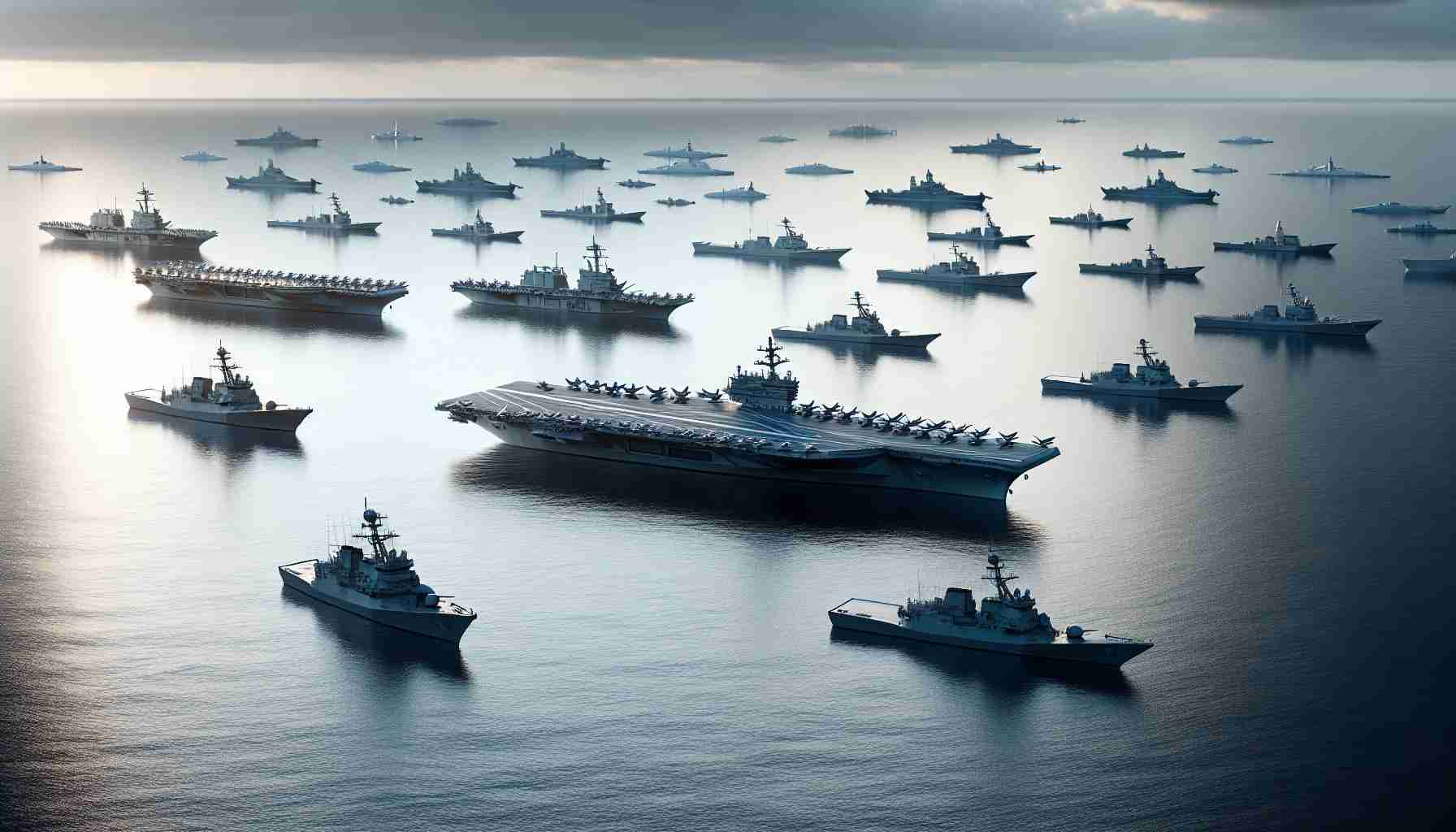China is making significant strides in enhancing its naval capabilities with a groundbreaking development—a land-based nuclear reactor designed for warships. A recent examination of satellite imagery alongside Chinese governmental documents has revealed the reality behind the speculation of a nuclear-powered aircraft carrier in the making. This advancement represents an important leap toward bolstering the country’s maritime force, confirming its intentions to integrate nuclear propulsion into its naval fleet.
The implications of this technology are profound. While conventional aircraft carriers are already part of China’s formidable navy, which is the largest globally, the addition of nuclear-powered vessels would revolutionize operational capability. Nuclear carriers are not only capable of extended deployments without the need for refueling, but they also have enhanced energy output, supporting advanced onboard systems and accommodating more weapons and fuel.
Currently, only the United States and France operate nuclear-powered aircraft carriers, with the U.S. maintaining a significant advantage in naval strength. China, which now boasts three carriers including the indigenous Type 003 Fujian, is accelerating its efforts, with research indicating ongoing work on a fourth vessel.
Critical research findings have pointed to a designated site known as Base 909, where the reactor is being developed. This site has been linked to significant projects within China’s defense framework, supporting the notion of an ambitious nuclear future for the People’s Liberation Army Navy. As China aims to establish itself as a leading maritime power, this development represents a crucial step towards achieving that goal.
China’s Naval Evolution: The Nuclear Future and Its Global Implications
As China advances its naval capabilities with the development of a land-based nuclear reactor for warships, the ramifications of this technological leap are echoing beyond mere military strategy. These advancements could reshape not only national security paradigms but also international relations, regional stability, and economic dynamics.
Impact on Regional Security
China’s ongoing naval expansion, underscored by the imminent introduction of nuclear-powered vessels, raises questions about power dynamics in the Asia-Pacific region. Neighboring countries such as Japan, South Korea, and India may feel compelled to enhance their own maritime and defense capabilities in response. This arms race could escalate tensions, especially in contested areas like the South China Sea, where territorial disputes are already a flashpoint.
Economic Considerations
The investment in nuclear-powered naval technology signifies a long-term commitment by China to not only bolster its military presence but also to secure maritime trade routes crucial for its economy. Approximately 90% of China’s trade is transported by sea, and having a powerful navy enables more effective protection of these interests. This move may also trigger economic implications for countries that rely on trade with China, creating a delicate balance between cooperation and competition.
Technological Race
The nuclear reactor development could spark a technological race among global military powers. Nations like India and Russia, already possessing nuclear capabilities, may ramp up their research and development initiatives to maintain or bolster their strategic advantages. This could lead to increased investments in advanced military technologies and capabilities.
Environmental and Safety Concerns
Despite the perceived benefits of nuclear propulsion, there are significant concerns regarding safety and environmental implications. Nuclear incidents, as evidenced by historical disasters, pose a risk not only to military personnel but also to civilian populations and ecosystems. The management of nuclear waste and potential accidents raises ethical questions about the proliferation of nuclear technology, particularly in a region with dense populations.
Controversial Perspectives
Critics of China’s military expansion argue that such developments could destabilize an already volatile region. The increasing number of nuclear vessels could potentially lead to a miscalculation in crisis scenarios, given the heightened stakes involved. In contrast, proponents suggest that a powerful naval fleet underpins regional stability by acting as a deterrent against aggression.
Frequently Asked Questions
1. How does China’s new nuclear-powered navy compare to the United States?
While the U.S. currently leads in naval strength and experience with nuclear carriers, China’s rapid advancements indicate a serious commitment to narrowing this gap. The United States operates 11 nuclear-powered aircraft carriers, while China is on track to increase its fleet and capabilities significantly.
2. What geopolitical factors could arise due to China’s nuclear ambitions?
China’s development of nuclear-powered vessels may lead to reassessments of alliances and defense strategies throughout Asia. Countries may seek closer military partnerships, prompting shifts in global alliances and a reconfiguration of existing security arrangements.
3. Will this lead to increased military spending in the region?
Yes, it is likely that regional powers will increase their military budgets in response to China’s advancements, focusing on enhancing their naval and defense capabilities to maintain deterrence and readiness.
As the situation unfolds, the implications of China’s nuclear naval ambitions will require close observation, as they have the potential to redefine the power balance, impact global trade, and change the landscape of international maritime security.
For further insights into global military developments, visit Department of Defense.
The source of the article is from the blog elblog.pl



